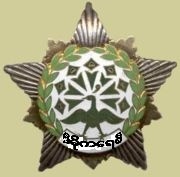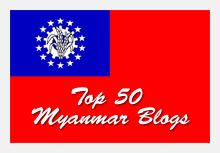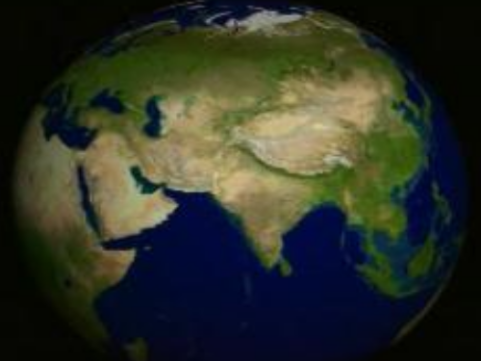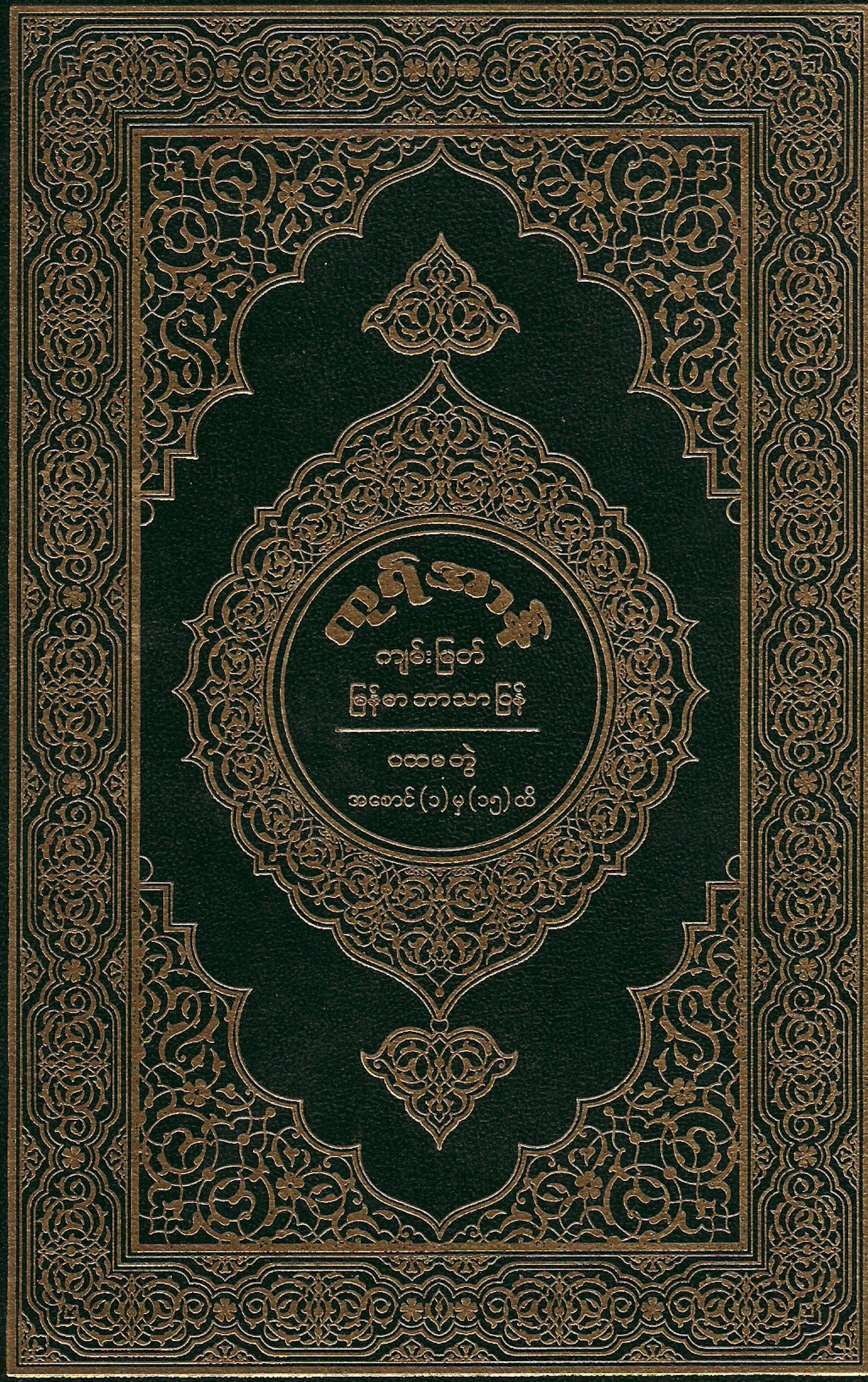Roots of Burmese Muslims
There is definitely direct spread of Islam to this part of the world and Burma/Myanmar directly from Arabia and Africa continent. But I hereby wish to stress on the one root or SEED OF ISLAM that came to Burma from India.
Islam began in Asia in the 7th century during the life of Muhammad. The greatest number of adherents of Islam has lived in Asia since the beginning of Islamic history.
Islam was started on the Arabian Peninsula by Muhammad in the 7th century. Since then it began spreading rapidly. Till his death (in 632), Muhammad managed to unite the whole of the Arabian peninsular into one country with Islam as the official religion.
Today most Muslims live in Asia. The majority of notable Muslim religious leaders are based in Asia. Asian countries with high Muslim population include: Indonesia, Saudi Arabia, Pakistan, Afghanistan, Iraq, Iran, Kuwait, India, Turkey, Russia, Yemen, Oman, and Qatar. One of the important 20th century figures that developed Islam was Muhammad Iqbal – a philosopher. Another important Asian Muslim was Abdullah Yusuf Ali, an Indian Muslim from Mumbai who translated the Qur’an to English.
It is necessary for academic purpose because most of the Muslims in Myanmar are Sunni Muslims from the Hannafi sect. From the Bosnia, Kosovo, Albania, Turkey, Central Asia (break away countries from Russia), Afghanistan, China, Pakistan, India and Bangladesh most of the Muslims are from this same sect.
Muslims from Thailand, Malaysia, Indonesia, Singapore and Brunei are from the Shafi sect of Sunni. Shafi sect is known to be spread by the sea route.
In contrast to this, Hannafi sect is known to be spread by the land route. Arabs propagate Islam directly to the Central Asia and Turky.
The Mongols, e.g. Gin Ghist Khan, although they are Buddhists employed the Muslim Turks and Central Asians and cause the spread of Islam to this part of the world. In this case, the saying, ‘conquerors are conquered’ need to be explained thoroughly.
The conqueror U Tar Tars took over Turkey, Iran and Iraq, and they killed the millions of men and children and married those Muslim women left behind. Their new wives strangely converted them into Islam and they accepted the Islamic cultures. So this is the living proof of the saying, ‘conquerors are conquered’.
And those Tar Tar/Turk descendents’ armies invaded Afghanistan, India subcontinent (future India, Pakistan, Bangladesh and Sri Lanka.) and established the Moghol Islamic Empire. So the Central Asia Muslims, Chinese Muslims, Yunan Chinese Muslims and Burma’s Chinese Muslims or Panthays and many of the Burmese Muslims are also their descendents. Even the Muslims in Thailand, Malaysia and Indonesia got Islam from those Chinese Muslims.
 Distribution of Islam per country.
Distribution of Islam per country.
Green represents a Sunni majority
and blue represents a Shia majority.
Today, Islam in Mongolia is mainly practiced by the Kazakhs of Bayan-Ölgii aimag in western Mongolia. The U.S. Department of State estimates that Muslims form 6% of the population, or roughly 150,000 people.
When the Mongol Empire broke up into four khanates, three of the four khanates became Muslim. These were the Golden Horde, Hulagu’s Ulus and Chagatai’s Ulus. The Yuan Empire also embraced Muslim peoples such as the Uyghurs. Although the court of the Yuan Empire adopted Tibetan Buddhism as the official religion, the majority of the ordinary Mongols, especially those who continued living in Mongolia proper, remained Shamanists.
In 1257, Hulagu Khan amassed an unusually large army, a significant portion of the Mongol Empire’s forces, for the purpose of conquering Baghdad. When they arrived at the Islamic capital, Hulagu demanded surrender but the caliph refused. This angered Hulagu, and, consistent with Mongol strategy of discouraging resistance, Baghdad was decimated. Estimates of the number of dead range from 200,000 to a million.
The Mongols destroyed the Abbasid Caliphate and The Grand Library of Baghdad, which contained countless, precious, historical documents. The city would never regain its status as major center of culture and influence.
In 1401, warlord of Turco-Mongol descent Tamerlane (Timur Lenk) invaded Iraq. After the capture of Bagdad, 20,000 of its citizens were massacred. Timur ordered that every soldier should return with at least two severed human heads to show him (many warriors were so scared they killed prisoners captured earlier in the campaign just to ensure they had heads to present to Timur.
Timeline of Mongol invasions
-
1205–1209 invasion of Western China
-
1211–1234 invasion of Northern China
-
1218–1220 invasion of Central Asia (North eastern of Persia)
-
1220-1223, 1235-1330 invasions of Georgia and the Caucasus (North and north western of Persia)
-
1220–1224 of the Cumans
-
1223–1236 invasion of Volga Bulgaria
-
1231–1259 invasion of Korea
-
Mongol invasion of Europe
-
1237–1242 invasion of Rus
-
1241 invasion of Poland, Lithuania and Bohemia
-
1241 invasion of Hungary
-
1241 invasion of Austria and Northeast Italy
-
1242 invasion of Serbia and Bulgaria
-
1241-1244 invasion of Anatolia
-
1251-1259 invasion of Persia, Syria and Mesopotamia
-
1252-1472 Mongol military campaigns in Russia
-
1257, 1284, 1287 invasions of Vietnam
-
1258 invasion of Baghdad
-
1258-1259 invasion of Galych-Volhynia
-
1259 raid against Lithuania and Poland
-
1264-1265 raid against Bulgaria and Thrace
-
1274, 1281 invasions of Japan
-
1274 raid against Bulgaria
-
1275, 1277 raids against Lithuania
-
1277 invasion of Myanmar
-
1279 invasions of Southern China
-
1281 invasion of Syria
-
1285 invasion of Hungary
-
1285 raid against Bulgaria
-
1287 invasion of Myanmar
-
1287 raid against Poland
-
1293 invasion of Java
-
1297, 1299 invasions of India
-
1299 invasion of Syria
-
Mongol invasions of India(1222, 1241, 1257, 1292, 1298, 1306 and 1327)
-
Mongol invasion of Myanmar (1300)
-
1303 Mongol invasion of Syria
-
312 Mongol invasion of Syria
Mongols were highly tolerant of most religions, and typically sponsored several at the same time. At the time of Genghis Khan, virtually every religion had found converts, from Buddhism to Christianity and Manichaeanism to Islam.
To avoid strife, Genghis Khan set up an institution that ensured complete religious freedom, though he himself was a shamanist. Under his administration, all religious leaders were exempt from taxation, and from public service. Initially there were few formal places of worship, because of the nomadic lifestyle. However, under Ögedei, several building projects were undertaken in Karakorum. Along with palaces, Ogodei built houses of worship for the Buddhist, Muslim, Christian, and Taoist followers. The dominant religion at that time was Shamanism and Buddhism, although Ogodei’s wife was a Christian.
Turkic-Mongol military bands in Iran, after some years of chaos were united under the Saffavid tribe, under whom the modern Iranian nation took shape under the Shiite faith.
Meanwhile Mongol princes in Central Asia were content with Sunni orthodoxy with decentralized princedoms of the Chagatay, Timurid and Uzbek houses.
In addition to the Khanates and other descendants, the Mughal royal family of South Asia are also descended from Genghis Khan: Babur’s mother was a descendant — whereas his father was directly descended from Timur (Tamerlane).
At the time of Genghis Khan’s death in 1227, the empire was divided among his four sons, with his third son as the supreme Khan, and by the 1350s, the khanates were in a state of fracture and had lost the order brought to them by Genghis Khan.
Eventually the separate khanates drifted away from each other, becoming the Il-Khans Dynasty based in Iran, the Chagatai Khanate in Central Asia, the Yuan Dynasty in China, and what would become the Golden Horde in present day Russia.
The Mughal Empire was an important imperial power in the Indian subcontinent from the early 16th to the mid-19th centuries.
At the height of its power, around 1700, it controlled most of the subcontinent and parts of what is now Afghanistan. Its population at that time has been estimated as between 110 and 130 million, over a territory of over a billion acres (4 million km2)
The classic period of the Empire starts with the accession of Akbar the Great in 1556 and ends with the death of Aurangzeb in 1707, although the Empire continued for another 150 years. During this period, the Empire was marked by a highly centralized administration connecting the different regions of India. All the significant monuments of the Mughals, their most visible legacy, date to this period.
Mughal is the Persian word for Mongol and was generally used to refer to the Central Asians who claimed descent from the Mongol warriors of Genghis Khan. The foundation for Mughal empire was established around 1504 by the Timurid prince Babur, a descendant of Genghis Khan and Timur, when he took control of Kabul and eastern regions of Khorasan controlling the fertile Sindh region and the lower valley of the Indus River.
Babur’s son Humayun succeeded him in 1530 but suffered major reversals at the hands of the Pashtun Sher Shah Suri and effectively lost most of the fledgling empire. When the Afghans fell into disarray with the death of Sher Shah Suri, Humayun returned with a mixed army, raised more troops and managed to reconquer Delhi in 1555. Humayun conquered the central plateau around Delhi, he was killed in an accident and succeded by the son Akbar.
Akbar (1556 to 1605) succeeded his father on 14 February 1556, while in the midst of a war against Sikandar Shah Suri for the reclamation of the Mughal throne. Thus, he was thrust onto the throne and soon recorded his first victory at the age of 13 or 14. Jahangir, the son of Mughal Emperor Akbar and Rajput princess Mariam-uz-Zamani, ruled the empire from 1605–1627.
In October 1627, Shah Jahan, the son of Mughal Emperor Jahangir and Rajput princess Manmati, succeeded to the throne, where he inherited a vast and rich empire in India; and at mid-century this was perhaps the greatest empire in the world. Shah Jahan commissioned the famous Taj Mahal (1630–1653) in Agra as a tomb for his wife Mumtaz Mahal, who died giving birth to their 14th child. By 1700 the empire reached its peak with major parts of present day India,
After the invasion of Persia by the Mongol Empire, a regional Turko-Persio-Mongol dynasty formed. Just as eastern Mongol dynasties inter-married with locals and adopted the local religion of Buddhism and the Chinese culture, this group adopted the local religion of Islam and the Persian culture.
The first Mughal King, Babur, established the Mughal dynasty in regions spanning parts of present-day Pakistan and India. Upon invading this region, the Mughals inter-married with local royalty once again, creating a dynasty of combined Turko-Persian, and Mongol background. King Babur did this to create peace among the different religions in the region.
Despite preaching Islamic values himself, Babur focused on setting a good example for the Mughal Dynasty by emphasizing religious tolerance. The language of the court was Persian. The language spoken was Urdūn, which today has advanced into Urdu. Urdūn originated from Persio-Arabic formation, and took on various characteristics of Persian, Chagatai, and Arabic. Today, Urdu is the National Language of Pakistan and is spoken by most Indian Muslims. Religious orthodoxy would only play an important role during the reign of Aurangzeb Ālamgīr, a devout Muslim.
This last of the Great Mughals retracted some of the tolerant policies of his forbears. Under his reign the empire reached its greatest extent in terms of territorial gain and economic strength. I
slam first came into India in the province of Kerala during the lifetime of Prophet Mohammed himself. Prophet Mohammed is said to have sent messengers to the Roman (Byzantine) Emperor Heraclius, the Sassanian (Persian) Emperors Chosroes (Khushrau Parvez) and Yazdgard, and to the Kings of China and Kerala (in South India).
The Kings of China and Kerala are said to have received the messengers with great courtesy. King Cheraman of Chera dynasty of Kerala Voluntarily Converts to Islam in the 7th Century. Tamerlane, a corruption of the name in Persian, Timur-i-Leng, meaning “Timur the Lame.”
The word Timur is Turkic for “iron”. He became the ruler of an empire that stretched from Delhi to Anatolia. Timur was born in Kesh, fifty miles south of Samarkand) in 1336. His capture of Delhi in 1398 and became the Emperor of Hindustan. Samarkand, Timur’s royal city, celebrated its 2500th anniversary in 1970. It is an ancient site, located on the Zarafshan River, in modern-day Uzbekistan.
BABUR, THE FIRST OF THE GREAT MOGHULS,was born on February 14, 1483 in Ferghana east of Samarkand. The name “Moghul” is a Persian variant of “Mongol”. Emperor Babur (1483-1530), the founder of the great Mughal dynasty, was descended from both Genghis Khan and Timur. In 1504, Babur captured the Kabul, Afghan and India in 1524. Two years later, he defeated the Sultan of Delhi . Akbar (1542-1605) was the third and most famous Mughal emperor. Babar established the Mughal dynasty which ruled from Delhi (and later from Agra) Between 1527 C.E. and 1690 C.E., the Mughals gradually expanded their hold over almost the whole of India. They ruled from 1527 up to 1857. The Mughal (and Muslim) rule was formally abolished by the British.
The last Muslim Moghul Emperor of India, Abu Za’far Saraj al-Din Bahadur Shah and his family members and some followers were exiled to Yangon, Myanmar (Burma). The Mongols themselves were assimilated into local populations after the fall of the empire, and many of these descendants adopted local religions — for example, the eastern Khanates largely adopted Buddhism, and the western Khanates adopted Islam, largely under Sufi influence. The last Khan who was the ruler of South Asia, Bahadur Shah Zafar was deposed by the British after the collapse of the 1857 uprising and exiled to Rangoon where he lies buried. His sons were killed by the British in Humayun’s tomb, the burial place of their ancestor in Delhi. He died there and was buried in Yangon (Rangoon) on 7.11.1862. Now his burial site became a minor diplomatic clash between India and Pakistan. Both of them want to control the site now famous as a shrine and even some of the Burmese Buddhists used to go and pray there because Za’far Shar, as they known, was regarded as a saint.
The first Mughal emperor Babur wrote in the Bāburnāma:
“Hindustan is a place of little charm. There is no beauty in its people, no graceful social intercourse, no poetic talent or understanding, no etiquette, nobility or manliness. The arts and crafts have no harmony or symmetry. There are no good horses, meat, grapes, melons or other fruit. There is no ice, cold water, good food or bread in the markets. There are no baths and no madrasas. There are no candles, torches or candlesticks”.
The Mughal period would see a more fruitful blending of Indian, Iranian and Central Asian artistic, intellectual and literary traditions than any other in Indian history. The Mughals had a taste for the fine things in life — for beautifully designed artifacts and the enjoyment and appreciation of cultural activities. The Mughals borrowed as much as they gave; both the Hindu and Muslim traditions of India were huge influences on their interpretation of culture and court style. Nevertheless, they introduced many notable changes to Indian society and culture, including:
-
Centralised government which brought together many smaller kingdoms
-
Persian art and culture amalgamated with native Indian art and culture
-
Started new trade routes to Arab and Turk lands, Islam was at its very high
-
Mughlai cuisine
-
Urdu and spoken Hindi languages were formed for common Muslims and Hindus respectively
-
A new style of architecture
-
Landscape gardening
A major Mughal contribution to south Asia was their unique architecture. Many monuments were built during the Mughal era including the Taj Mahal.
Acknowledgement
Some data and photos from Wikipedia.
Filed under: Africa, Akbar the Great, Analysis, Arabia, ASEAN, British, British Colony, Burma, Burmese Chinese Muslims, Burmese History, Burmese Indian Muslims, Burmese Muslims, CHINA, Genghis Khan, Hannafi sect, Individual Freedom, Islam, Islam in Myanmar, Law, Malaysia, Migrants, Minority Races, Mongol invasions, Mongolia, Mughal Empire, Muslim Governments, Myanmar, Myanmar History, Panthays, Politics, Religion, Rule of Law, Shafi sect, Sunni Muslims, Taj Mahal., Tar Tars, Wikipedia | Tagged: Africa, Arabia, Bangladesh, Brunei, Burma, Genghis Khan, Hannafi sect, History, India, Indonesia, Islam, Malaysia, Migration, Mongol invasions, Mongolia, Mughal Empire, Muslim Governments, Myanmar, OIC, OIC countries, Pakistan, Politics, Saudiarabia, Shafi sect, Sunni Muslims, Taj Mahal., Tar Tars, Thailand | Leave a comment »

















+(Small).jpg)

